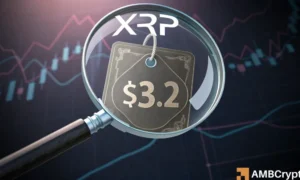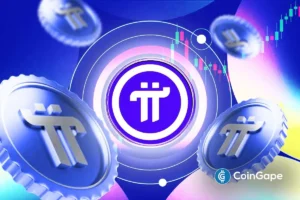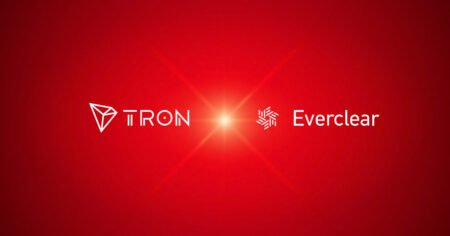Coinbase Launches x402 Bazaar: A New Era for AI and Micropayments
Coinbase has taken a significant step in the fintech world by unveiling the x402 Bazaar, a platform designed for AI agent-powered micropayments utilizing USDC. This innovative catalog acts as a machine-readable index that lists various services ready to accept pay-per-request payments, offering a streamlined discovery layer for developers and agents looking to integrate the x402 protocol. Currently, the x402 Bazaar is in its early development phases, showcasing endpoints that settle transactions via Coinbase’s hosted facilitator. This initiative not only revives the HTTP 402 “Payment Required” status code but also establishes a repeat-request flow where clients can securely attach a signed payment payload.
The Mechanics of the x402 Protocol
The x402 protocol is designed to facilitate seamless micropayments while alleviating the need for sellers to maintain complex blockchain infrastructures. Coinbase states that their hosted facilitator verifies and settles payments without imposing any facilitator fees on USDC transactions conducted on the Base network. Presently, USDC on Base mainnet and Base Sepolia are the only supported networks, but Coinbase has plans to broaden its horizon by adding more assets. Furthermore, the whitepaper accompanying this launch emphasizes the economic benefits of sub-second confirmations and minimal gas fees, positioning the x402 protocol as a more efficient alternative compared to conventional payment methods such as credit cards.
Structure and Functionality of the Bazaar
The x402 Bazaar features an endpoint that returns structured JSON data for each listed service, detailing accepted assets, network specifics, destination addresses, and the maximum required amounts. For example, a maximum required amount of 200 for USDC on Base translates to just $0.000200, underscoring the intended granularity for transaction sizes. This degree of detail not only facilitates precise micropayments but also streamlines the overall user experience. Moreover, the Base’s Flashblocks feature allows for 200-millisecond pre-confirmations, reducing perceived confirmation times for users interacting with the platform. By factoring in network latency, providers typically report end-to-end acknowledgments ranging from 300 to 500 milliseconds, ensuring that metered APIs maintain user-friendly pricing structures without degrading user experience.
Advantages of EIP-3009 Authorization
At the core of the x402 protocol’s implementation lies the EIP-3009 standard. This framework allows clients to sign authorizations that the hosted facilitator submits on-chain, ensuring secure and efficient payment processing. Coinbase has made this functionality readily accessible via its API, providing endpoints for verification and settlement. Additionally, dedicated community libraries are available to facilitate developers looking to mirror these functionalities in their applications. Detailed documentation can be found through Coinbase’s GitHub repository, providing ample resources for developers eager to participate in this evolving ecosystem.
Navigating Regulatory Landscapes
As the x402 Bazaar rolls out, it operates within a complicated regulatory environment. The recent passage of the GENIUS Act in the United States has opened doors for clearer rules surrounding stablecoins, mandating full backing in cash or short-term Treasuries while establishing a licensing structure. In contrast, European regulations surrounding stablecoins, particularly the Markets in Crypto-assets regime, clarify how e-money tokens and asset-referenced tokens must adhere to specific requirements. Thus, the successful implementation of x402 services, especially in the European market, hinges on compliance with these stringent regulations, ultimately impacting how user transactions are processed.
Future Outlook and Potential Applications
The demand for dollar-backed stablecoins is rapidly scaling, with the market value exceeding $280 billion. The growth prospects indicate a range that could reach the trillions if regulatory frameworks become more favorable. Moreover, the x402 protocol stands poised to monetize agent-driven workloads through a structured pricing model. If we consider the potential pricing between $0.001 and $0.01 per API call, the Bazaar could generate considerable gross payment volume, potentially ranging from $100 to $1,000,000 daily based on user adoption rates. Crucially, Coinbase has partnered with Shopify to enable USDC payments seamlessly within the Shopify Payments framework, signaling that on-chain retail could normalize within mainstream ecommerce.
Conclusion: The Path Ahead for x402 Bazaar
As the x402 Bazaar matures, it currently offers various services settling in USDC on the Base network. Coinbase’s FAQ indicates a future expansion to additional chains and assets, but the success of this venture will depend on how swiftly developers can list endpoints with transparent pricing. Moreover, the performance of Flashblocks in delivering reliable payment acknowledgements will be critical to establishing trust in this burgeoning payment system. With its discovery API live and fee-free transactions on Base, the x402 Bazaar is a promising innovation that, alongside a stabilizing policy environment around stablecoin settlements, holds the potential to reshape the landscape of digital payments.

















